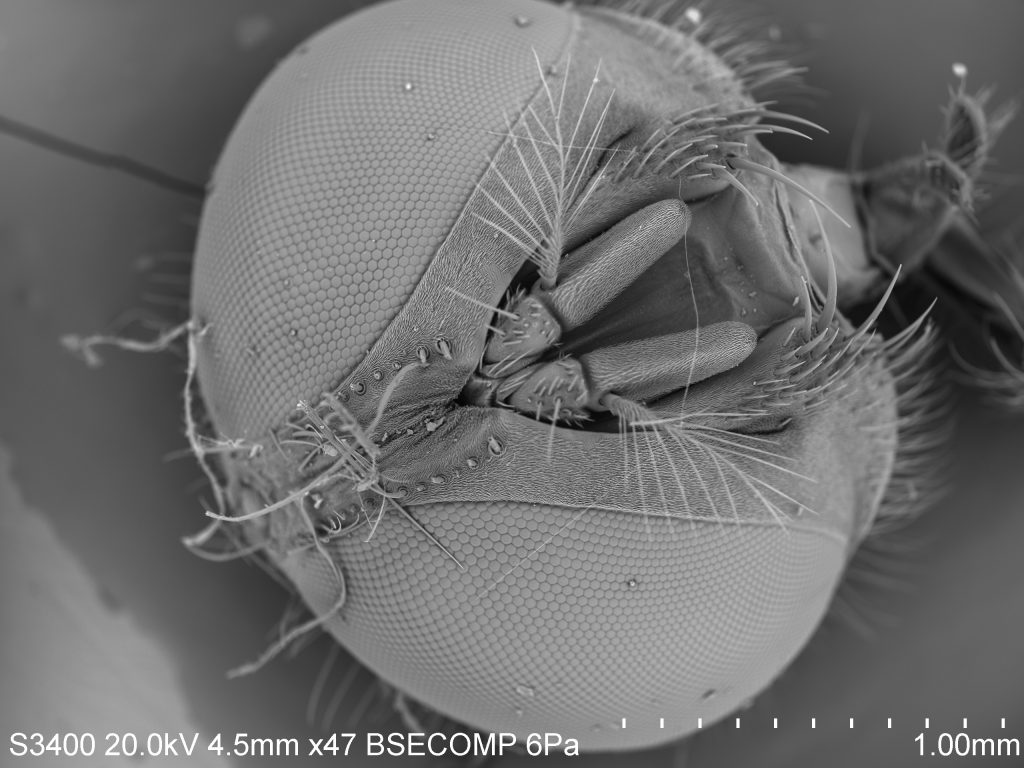This SEM image of a housefly at 47x magnification highlights the intricacies possessed by even the most common lifeforms. One may be intrigued by the stark contrast between the fine hairs and the thousands of hexagonal structures making up the eyes. Together the eyes create a mosaic-like image, giving flies spectacular peripheral vision. This may seem like a huge visual advantage. However, flies are unable to focus; they can see motion and form, but are unable to clearly see objects. This is why flies are so quick to flee. They see something headed their way, but have no clue what it may be.
The hexagonal shape making up a fly’s vision is not unique in the natural environment. This structure is found in numerous natural features such as honeycombs, columnar basalt, turtle shells, snakeskin, etc. This structure is so commonly found due to its geometry. Triangles, squares, and hexagons are the only three shapes with equal sides and angles that fill a flat plane. Of these, hexagons require the least total length of wall, making it the more efficient shape.


